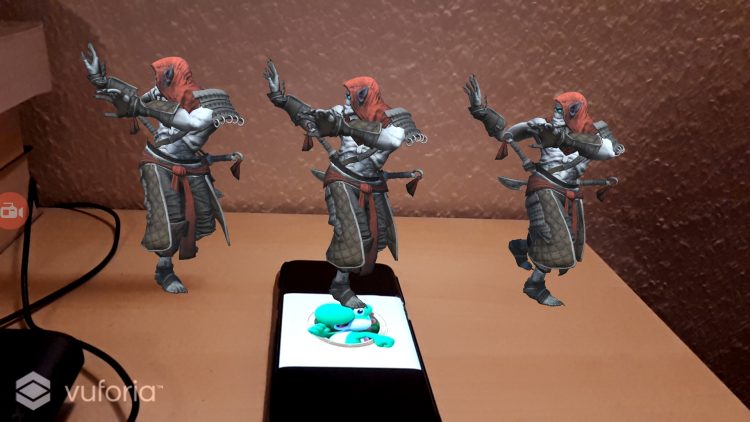
Augmented Reality App with Unity and Vuforia
Today I came across this Playful Technology tutorial about the integration of augmented reality into Android apps, and was directly intrigued about the simplicity of the process and the powerful outcome! So far I have never worked with Unity, but I thought so oft about starting with it, that it was an easy decision to make an AR app this weeks weekend project.
Unity is a powerful tool for 3D designs and mostly used in the video game industry. Vuforia is the market leader for augmented reality, especially for mobile devices. They take care of recognizing and tracing your targets, so your virtual overlays always stick to the real life objects to which they should be attached.
After a rather lengthy installation process, the actual setup of the AR application is surprisingly simply and straight forward. No line of code required to deploy an Android application. You can select any type of target looks, even 3D models, for example of your car. Then you could walk around and see digitally through it for example.
To keep things simple I just used marker images, like company or video game logos. After trying some images, you start getting a feeling of the right complexity. Very simple images like for example the Legend of Zelda triforce, are very hard for the system to detect, while more complex images, like for example an image of nintendos Yoshi, gets recognized immediately.
And then your imagination is the only thing stopping you from what you want to overlay over your target. First I tried it with simple images, so instead of a Shell logo, you would only see Greenpeace logos everywhere. I can imagine future real life ad-blockers when everybody only wears AR-glasses or AR-lenses.
Next step was overlaying a video over a static image, as Alastair shows in the above video. This was already extreme fun, reminding me of the pictures in Harry Potter, where the photographed start moving when you look at them. My grandkinds will have to don their AR devices when I am forcing them to watch my old physical photo albums, and everything will come to life there 😉
And then you also have to possibility to show 3D models and place them somewhere in relation to your target image. Unity accepts a big variety of formats and is fast in processing, rendering, resizing them.

It gets especially interesting when you start using colored and even animated 3D objects. You can choose between many characters and let them perform some of thousands of different movements at Mixamo for free! If you have already a humanoid 3D model, you can even upload it there and add the animation to it. It’s a little extra effort to create the animation controller and make them dance, but its definitely worth it 😀